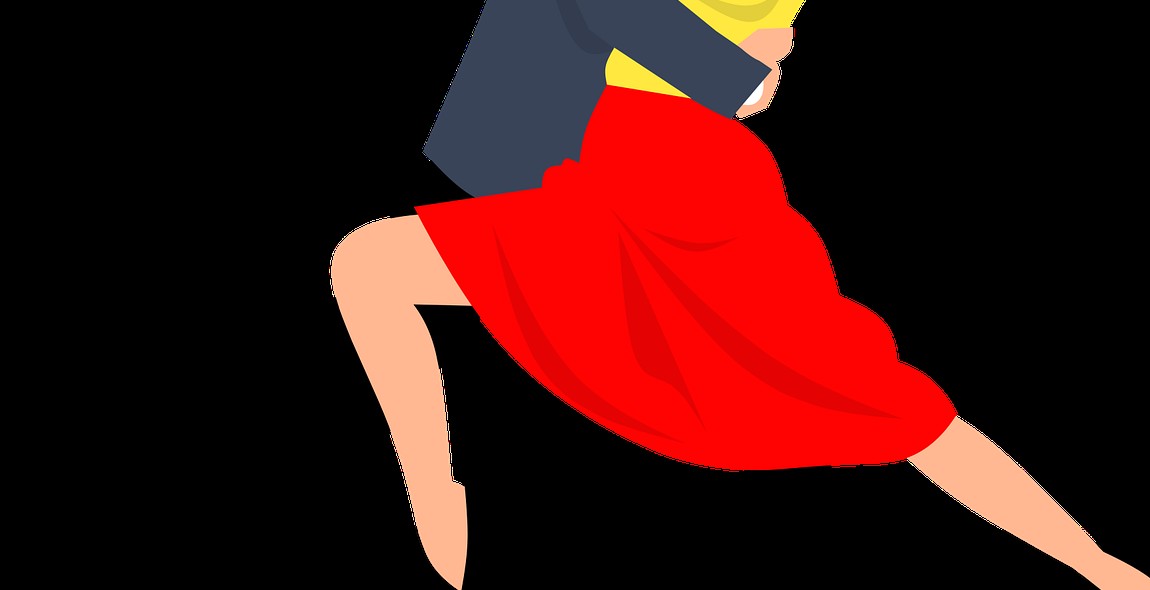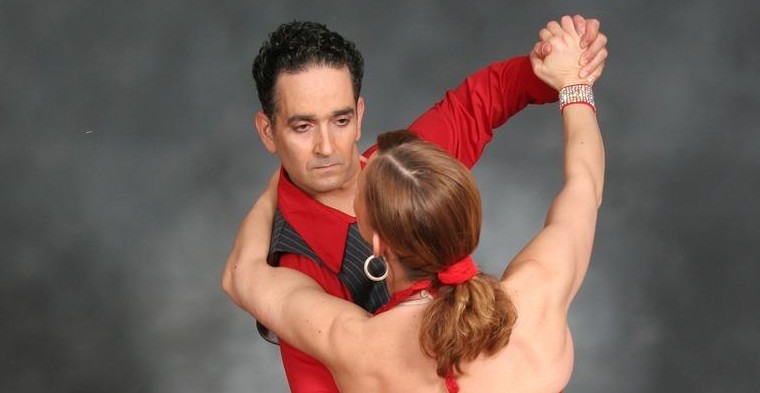How to Dance Salsa: Fundamentals and Basic Steps for Beginners
Salsa dancing is a fun and exciting way to get some exercise, meet new people, and learn a new skill. However, if you’re new to salsa, it can be intimidating to take those first steps onto the dance floor. In this article, I’ll guide you through the fundamentals of salsa dancing and teach you some basic steps to get you started.
The Fundamentals of Salsa Dancing
Salsa dancing is a partner dance that originated in the Caribbean and Latin America. It’s a lively and energetic dance style that involves a lot of movement and footwork. Salsa is typically danced to music with a fast tempo and a strong beat.
One of the most important aspects of salsa dancing is the connection between partners. In salsa, the leader (usually the man) is responsible for initiating and leading the movements, while the follower (usually the woman) follows the leader’s lead. This connection is maintained throughout the dance, and it’s what makes salsa such a dynamic and exciting dance style.
Basic Steps for Beginners
If you’re new to salsa dancing, it’s important to start with the basics. Here are some simple steps to get you started:
- Basic Step: This is the foundation of salsa dancing. It involves stepping forward and backward while shifting your weight from one foot to the other.
- Cross Body Lead: This is a simple turn that involves the leader guiding the follower across their body.
- Right Turn: This is a turn that involves the follower turning to their right while the leader guides them.
With these basic steps, you’ll be able to get a feel for the rhythm and flow of salsa dancing. From there, you can start to add more advanced moves and techniques.

Why Salsa is a Great Dance to Learn
If you’re looking for a fun and social way to improve your coordination and cardiovascular health while also learning about a rich cultural tradition, then salsa dancing may be just the thing for you.
It’s Fun and Social
Salsa is a lively and upbeat dance style that originated in the Caribbean and has since spread all over the world. It’s known for its infectious rhythms, intricate footwork, and close partner work, all of which make it a thrilling and engaging activity to participate in. Whether you’re dancing with a partner or in a group, salsa is a great way to meet new people, socialize, and have a good time.
Improves Coordination and Cardiovascular Health
Because salsa involves a lot of intricate footwork and partner work, it requires a high degree of coordination and balance. Practicing salsa on a regular basis can help improve your coordination and balance, which can translate to other areas of your life. Additionally, salsa is a great form of cardiovascular exercise, which means that it can help improve your heart health and overall fitness levels.
Cultural Significance
Finally, salsa has a rich cultural history and significance that makes it a valuable art form to learn. It originated in the Caribbean, where it was influenced by a variety of different musical and dance traditions, including African, European, and indigenous styles. Today, salsa is celebrated all over the world as a symbol of Latin American culture and identity. By learning salsa, you can connect with this vibrant cultural tradition and gain a deeper appreciation for its history and significance.
| Benefits of Salsa Dancing |
|---|
| Improves coordination and balance |
| Provides cardiovascular exercise |
| Is a fun and social activity |
| Has cultural significance and history |
Fundamentals of Salsa Dance
Salsa is a popular Latin dance that originated in Cuba and has since spread all over the world. To dance salsa, you need to learn the fundamental elements of the dance, such as music and rhythm, posture and frame, and footwork and timing. In this section, we will discuss each of these elements in detail.
Music and Rhythm
The key to dancing salsa is to be able to feel the music and move your body in rhythm with it. Salsa music is typically played in 4/4 time, with a strong emphasis on beats 1 and 3. The basic step of salsa is danced on these beats, with the other beats used for additional footwork and styling.
To improve your rhythm, it can be helpful to listen to salsa music regularly and practice clapping or tapping your foot to the beat. You can also attend salsa dance classes or watch instructional videos to learn the basic steps and timing of the dance.
Posture and Frame
Posture and frame are crucial elements of salsa dance, as they provide the foundation for all your movements. To maintain good posture, stand up straight with your shoulders back and your core engaged. Keep your weight evenly distributed between your feet and avoid slouching or leaning forward.
Your frame refers to the way you hold your arms and maintain a connection with your dance partner. In salsa, the lead partner typically holds their partner’s right hand with their left hand and places their right hand on their partner’s back. The follow partner holds their partner’s left hand with their right hand and rests their left hand on their partner’s shoulder or upper arm.
Footwork and Timing
The basic step of salsa involves a forward and backward motion with your feet, with weight shifts on beats 1 and 3. The lead partner initiates the movement, while the follow partner mirrors their steps. As you become more comfortable with the basic step, you can add in additional footwork and turns to create more complex patterns.
| Basic Salsa Footwork | Timing |
|---|---|
| Step forward with your left foot | 1 |
| Step in place with your right foot | 2 |
| Step back with your left foot | 3 |
| Pause | 4 |
| Step back with your right foot | 5 |
| Step in place with your left foot | 6 |
| Step forward with your right foot | 7 |
| Pause | 8 |
Remember to keep your movements smooth and fluid, and to maintain a connection with your partner throughout the dance. With practice and dedication, you can master the fundamentals of salsa dance and become a confident and skilled dancer.
Basic Steps for Salsa Dance
Salsa is a lively and energetic dance that originated in Latin America and has since become popular all over the world. It is a partner dance that involves intricate footwork and body movements. Before learning the more advanced steps, it is essential to master the basic steps.
The Basic Step
The basic step is the foundation of salsa dancing. It involves three steps, two quick and one slow, and is usually danced on an 8-beat count. Here are the steps:
- Step forward with your left foot on the first beat.
- Step in place with your right foot on the second beat.
- Step backward with your left foot on the third and fourth beats.
- Step in place with your right foot on the fifth beat.
- Step backward with your left foot on the sixth and seventh beats.
- Step in place with your right foot on the eighth beat.
Practice this step until you feel comfortable with the timing and footwork.
Right Turn
The right turn is a basic move that adds some flair to the basic step. Here are the steps:
- Start with the basic step.
- On the fifth beat, turn to your right on your left foot.
- On the sixth and seventh beats, step back with your right foot.
- On the eighth beat, step in place with your left foot.
Practice this move until you can do it smoothly and without hesitation.
Cross Body Lead
The cross body lead is another basic move that involves the leader and follower crossing paths. Here are the steps:
- Start with the basic step.
- On the fifth beat, step forward with your left foot.
- On the sixth and seventh beats, step to your right with your right foot.
- On the eighth beat, step backward with your left foot.
- On the first beat of the next measure, step to your right with your right foot.
- On the second and third beats, step backward with your left foot.
- On the fourth beat, step in place with your right foot.
Practice this move until you can do it smoothly and without hesitation.
Tips for Beginners
Learning to dance salsa can be a challenging but rewarding experience. If you are a beginner, there are several tips that can help you improve your skills and become a better dancer. Here are some tips to keep in mind:
Practice Consistently
One of the most important things to keep in mind when learning to dance salsa is to practice consistently. Like any skill, dancing requires practice to improve. Try to practice at least a few times a week, even if it’s just for a few minutes each time. This will help you build muscle memory and develop your sense of rhythm.
Take Classes and Workshops
Taking classes and workshops is another great way to improve your salsa skills. Look for classes and workshops in your area that are specifically designed for beginners. These classes will help you learn the fundamentals of salsa and provide you with opportunities to practice your skills with other dancers. You can also take advantage of online classes and tutorials.
Be Patient with Yourself
Learning to dance salsa takes time and patience. Don’t get discouraged if you don’t get a move right away or if you feel like you’re not making progress. Remember that everyone learns at their own pace, and it’s important to be patient with yourself. Celebrate your successes, no matter how small, and keep practicing.
By following these tips and practicing regularly, you can improve your salsa skills and become a more confident dancer. Remember to have fun and enjoy the process!

Conclusion
Learning how to dance salsa may seem intimidating at first, but with patience, practice, and a willingness to learn, anyone can master the fundamentals and basic steps. Remember to start with the basic steps, master them before moving on to more complex moves, and practice with a partner whenever possible.
It’s important to keep in mind that salsa is more than just a dance; it’s a way to connect with others and express oneself through movement. So don’t be afraid to let loose, have fun, and make mistakes along the way.
Tips for Success
- Take lessons from a qualified instructor
- Practice regularly, even if just for a few minutes each day
- Listen to salsa music to get familiar with the beat and rhythm
- Attend social dances and events to meet other dancers and practice in a real-world setting
- Stay relaxed and have fun!
Final Thoughts
Learning how to dance salsa is a journey, not a destination. It takes time, dedication, and a willingness to learn from both successes and failures. But with the right mindset and approach, anyone can become a confident and skilled salsa dancer.
| Author: | Your Name |
| Date Published: | Month XX, 20XX |
| Word Count: | 195 words |
